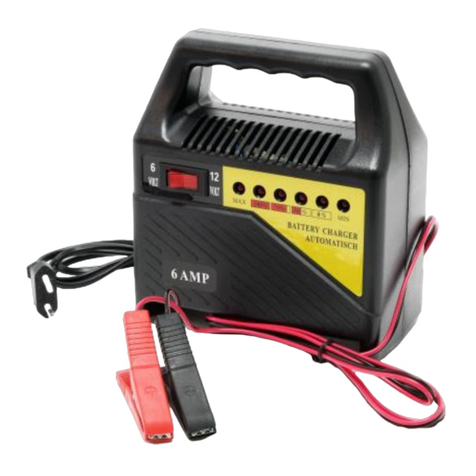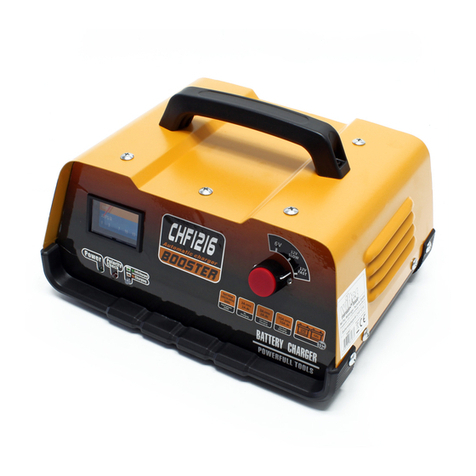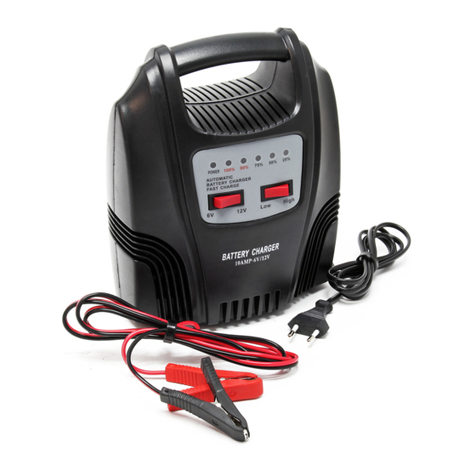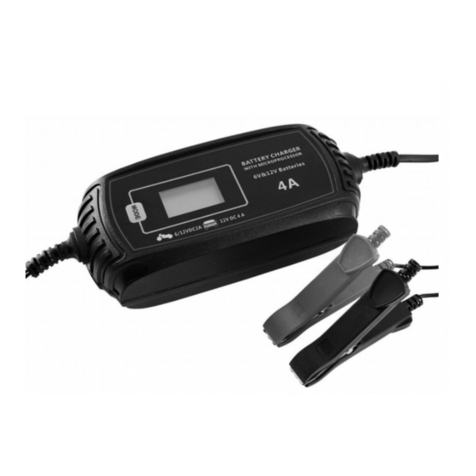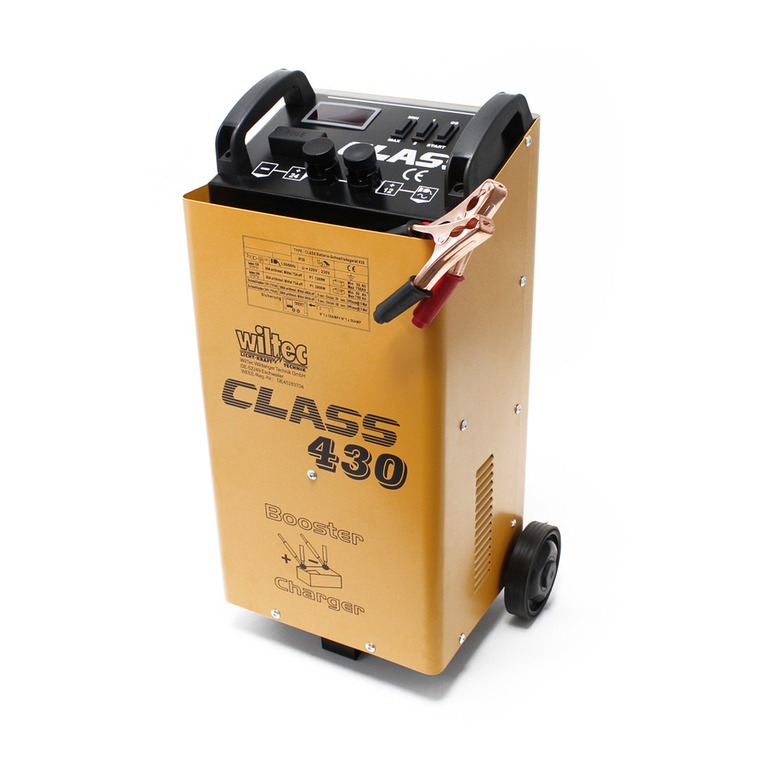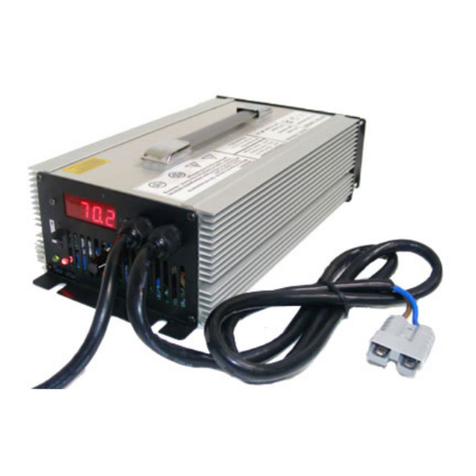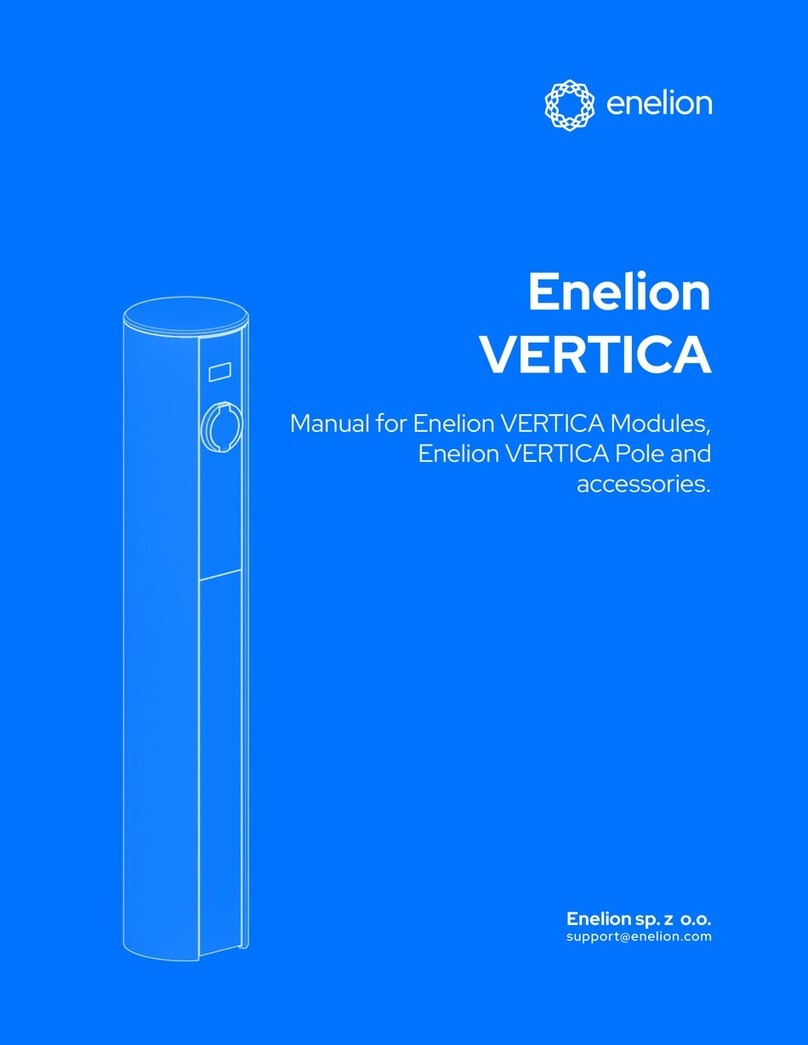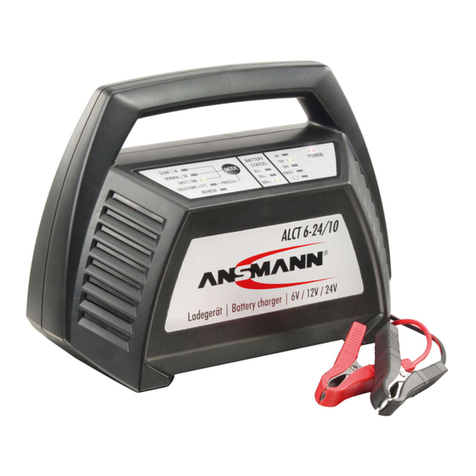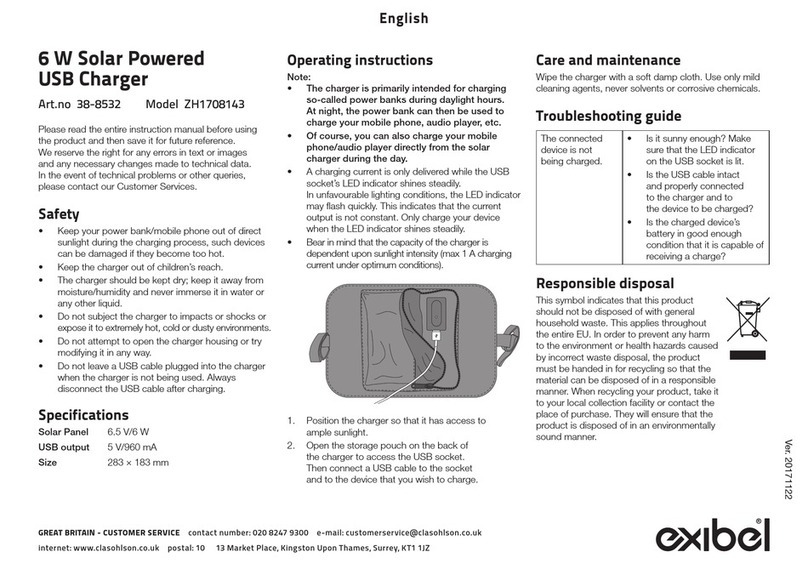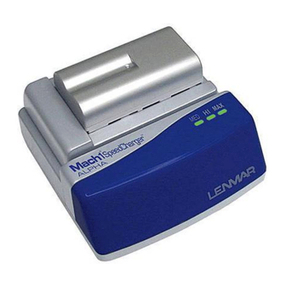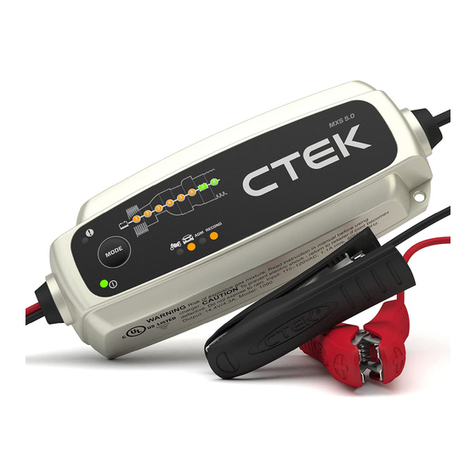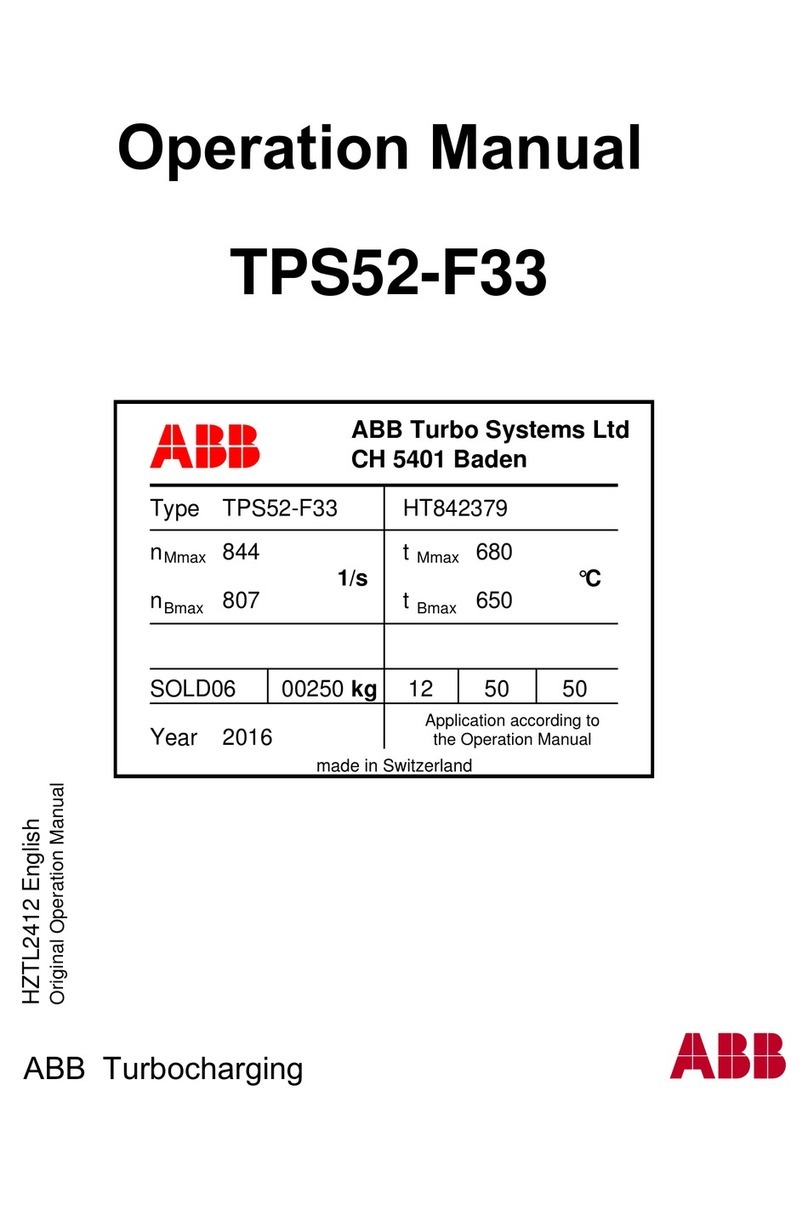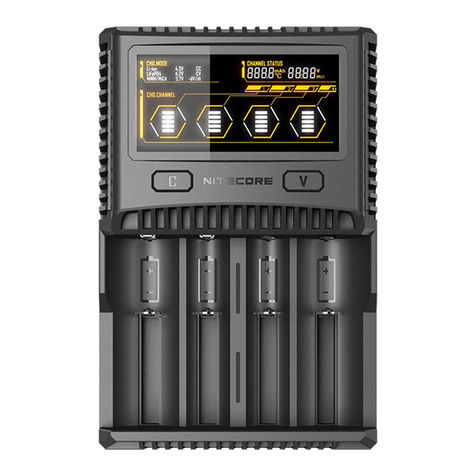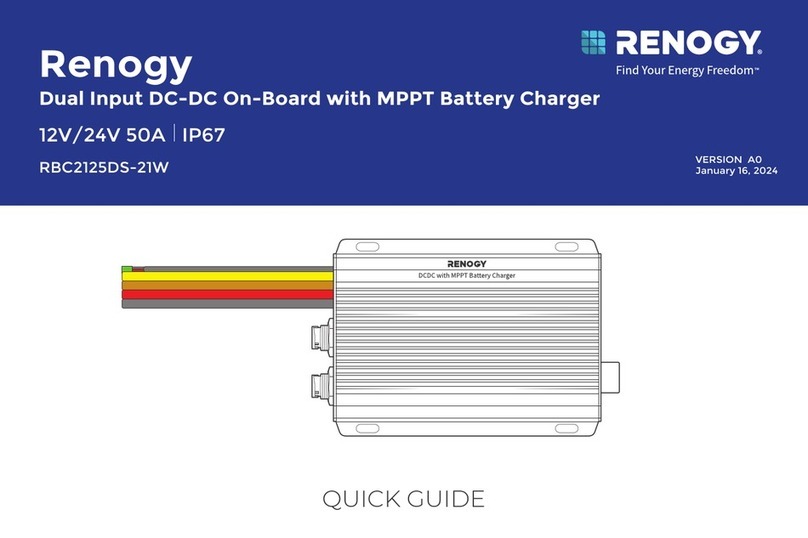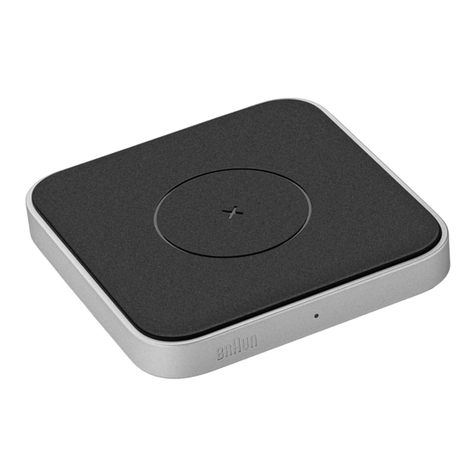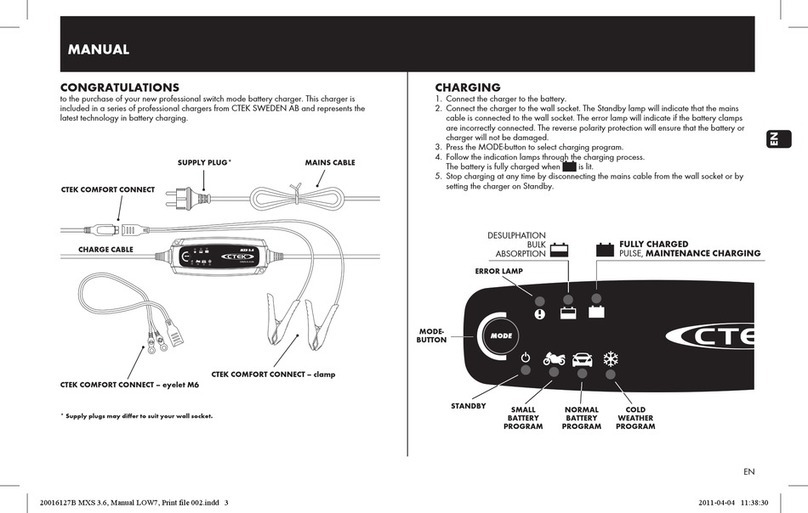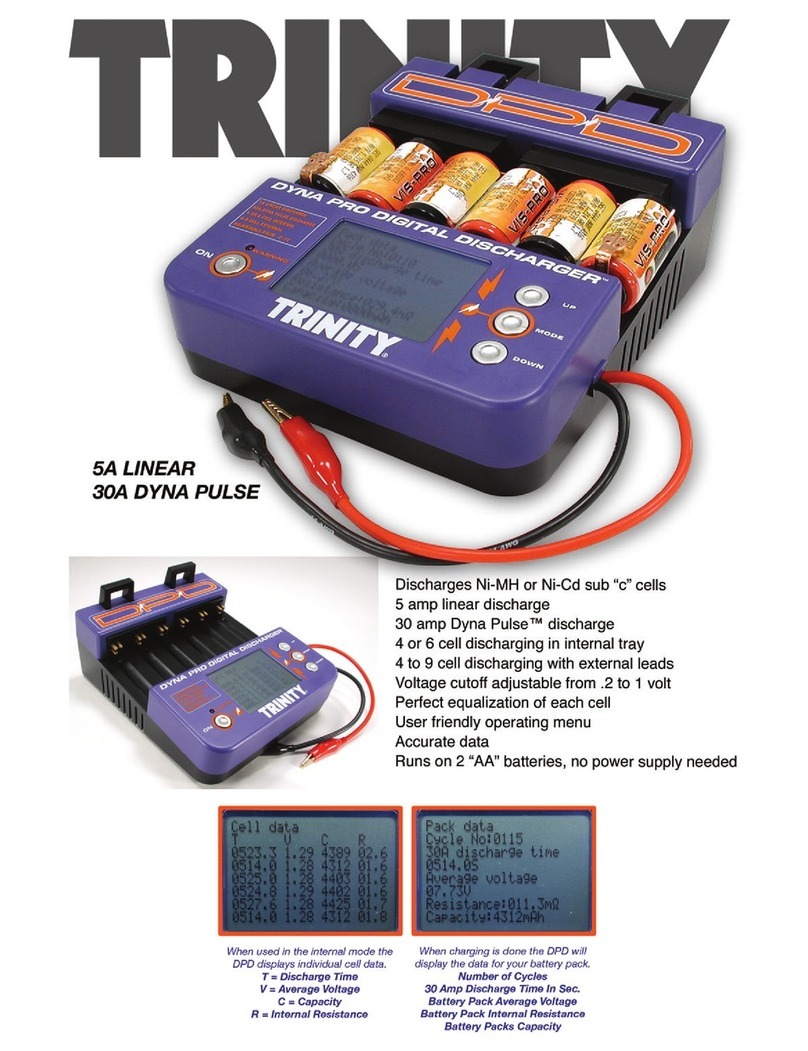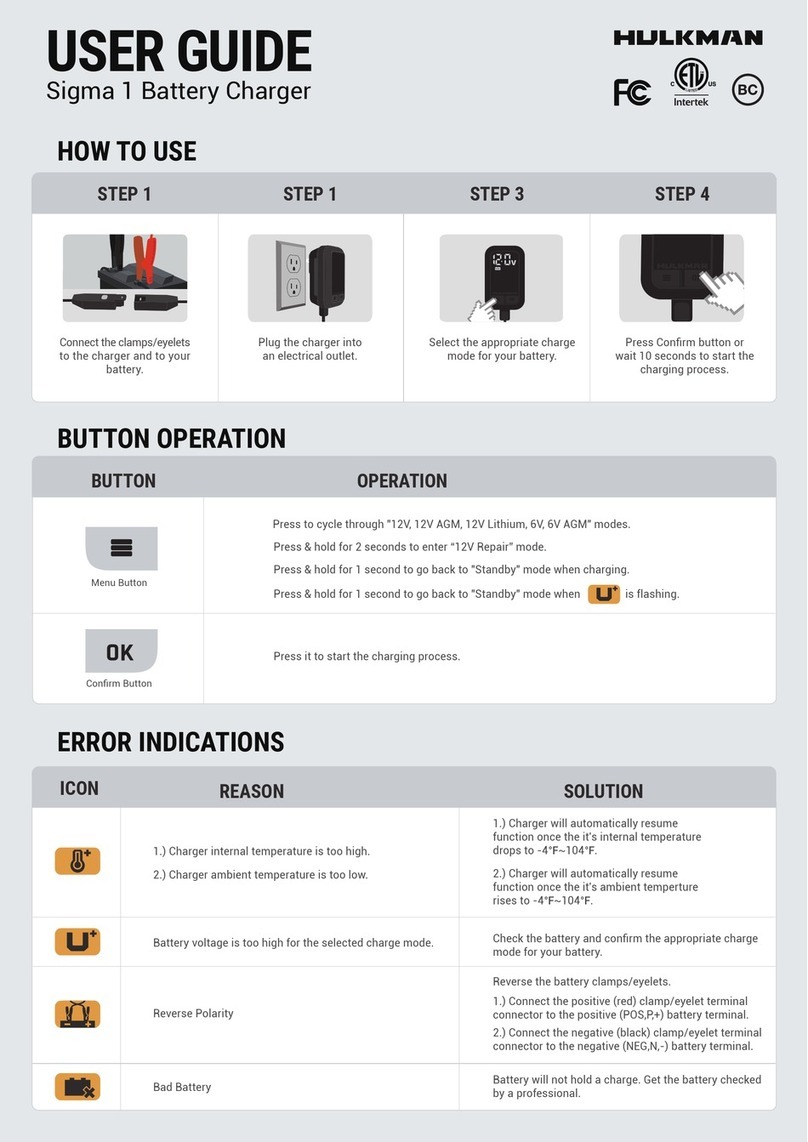© by WilTec Wildanger Technik GmbH Seite 11
http://www.WilTec.de
http://www.aoyue.eu
http://www.teichtip.de
Always use a grounded power connection with the right mains voltage. The corresponding mains volt-
age can be found on the nameplate. If you have doubts about the connection being grounded, have it
checked by a qualified professional. Never use a faulty electric cable. It is advisable to disconnect the
power supply at the electrical socket and not at the extension cable if one is used.
All people who operate and service this device have to familiarize themselves with the instructions for
use and be informed about the potential risks. Children are not allowed to use the battery charger.
Please note the rules and regulations for safety and health at work and the prevention of accidents.
The battery charger has to be protected via a residual current-operated protective device with a rated
current of max. 30 mA.
Do not operate the battery charger if you are tired, ill or if you are under the influence of alcohol or any
other drugs. Caution! The battery acid is corrosive! Acid splashes on skin or clothing should be im-
mediately treated with soap suds and rinsed with plenty of water. Wear protective glasses while charg-
ing the battery. If acid splashes into the eyes, immediately rinse with plenty of water.
For your safety consult an eye doctor. Do not wear clothing made from synthetic materials when using
the battery charger. This could be damaged by the battery acid splashes. Load only rechargeable
batteries but never faulty batteries.
Please note the specifications of the battery manufacturer. Do not charge recently filled or faulty bat-
teries.
In case of short circuit by the charging terminals or incorrect polarity the glass fuse is activated. Re-
place the defective fuses with new ones having the same Ampere rating. Ensure a constant mains
voltage. By deep-discharged battery with large capacity the overload protection can be activated at the
upper charging stages, especially at excessive mains voltage.
In this case charge the battery with a lower current stage shortly before, till the overload protection
holds. If the battery is not used every 4 weeks a conservation charging has to be carry out or every 3
weeks discharged and recharged. Maintenance free batteries may be charged only under supervision.
Do not operate the battery charger in a wet or damp environment or when you are wet yourself and
protect it from direct sunlight. Do not use the battery charger in the proximity of flammable liquids and
gases. Install the device in a safe location so that nobody can step on the cable, fall over or damage it.
Additionally make sure you provide sufficient cooling through the ambient air and avoid heat accumu-
lation. Disconnect the power plug before cleaning the device and use only a damp cloth for cleaning.
Avoid using cleaning agents and take care that no fluids penetrate into the device.
The interior of the battery charger contains no parts that can be inspected or serviced by the user.
Leave the maintenance, adjustment and repair to qualified technical personnel. In case of unauthor-
ised intervention the 2-year warranty period is no longer valid! Keep this instruction manual safe.
Note
•Before connecting the battery charger check the charging level and the capacity of the battery to be
charged.
•Familiarize yourself with all the operating elements of the battery charger before you commission
the battery.
•In addition open the test slots of the battery. The battery acid should be filled at least 1 cm over the
lead plates.
•Attention! The test slots of the batteries must be opened during the charging process. Danger of
explosion.
•Fill in the battery with distilled water but only after charging.
